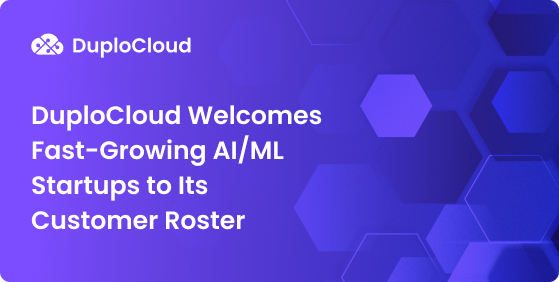Equipping developers with a comprehensive proprietary software toolkit improves development pipelines
Platform engineering is an essential part of modern, technology-focused businesses. For an organization to be successful in its platform engineering pursuits, it must understand the underlying complexity that drives platform engineering in today’s landscape, and how that complexity affects an organization’s ability to develop software, especially when working with cloud applications.
Here’s a complete overview of platform engineering and its role in today's businesses, as well as the steps organizations can take to create a cutting-edge internal development platform.
What Is Platform Engineering?
Platform engineering is the process of creating and maintaining a set of proprietary internal tools that help speed up software development. While the process is sometimes thought of as the next phase of DevOps, it’s better to think of it as DevOps’ supporting backbone.
Platform engineering has risen to prominence because of how complex modern software development is. Where traditional tech stacks are a set of fractured tools that require both expertise and manual labor to use effectively, platform engineering allows those tools to be coalesced into a single platform.
Read our blog post “What Is Platform Engineering?” for more information.
What Is an Internal Developer Platform?
An internal developer platform (IDP) is the toolset that platform engineering works to create. Essentially, platform engineering is the input, and internal developer platform is the output. The tools are meant to hasten the development of applications, remove bottlenecks, and improve the onboarding process for new hires. Most importantly, an IDP is scalable, growing alongside a company’s operational needs.
An effective IDP will automate repetitive and tedious tasks and simplify workflows, reducing cognitive load for developers. As software development becomes more sophisticated, IDPs become more essential. Cloud development is a key example of an IDP’s value for a developer. Today, many IDPs are created to enable developer self-service for provisioning cloud-native applications, or migrating existing applications to the cloud.
For more information about internal developer platforms, read our blog post “What Is an Internal Developer Platform?”
DuploCloud’s white paper “Internal Developer Platform for Cloud Deployment and Operations” covers the challenges and opportunities that come with IDP solutions. Download it today for a closer examination of the KPIs and desired goals of IDP software.

Building a Platform Engineering Team
A platform engineering team serves a vital role in determining a company’s overall success, and should be carefully curated. There are skillsets that will prove valuable when selecting candidates for a platform engineering team. The hard skills developers will need to be successful will change as DevOps evolves, but experience with software infrastructure is a must. Understanding tools that form software engineering’s underlying processes, like Kubernetes and IAM roles, etc., is also a positive.
A platform engineer’s soft skills are equally, if not more, important. An open, positive mindset is a necessary component for crafting IDP, as it’s indicative of a willingness to learn and respond to changes. Some of the crucial soft skills for a platform engineer are:
- Empathy: Problems are bound to arise, and platform engineers must be able to understand how those problems affect the end user. Having empathy is vital to ensuring that they can successfully grasp the situation.
- Perspective: Platform engineers must be able to see how an IDP will be utilized from end-to-end. Envisioning how the IDP will evolve over time is especially important to the team’s long-term success, as IDP development is an iterative process.
- Partnership: Platform engineering is a collaborative effort. Platform engineers need to be able to anticipate how their code will be interpreted by others, and be able to write code that’s easily understood.
To see other ideal candidate traits, read our full blog post “How to Build a Platform Engineering Team”
Platform Engineering Best Practices and Challenges
Carefully planning an IDP and anticipating roadblocks will improve the final platform, so it’s best to approach platform engineering with some best practices in mind.
Clarify Business Goals
An IDP is a business tool first and foremost, so its design must be clear and concise to deliver value. Every stakeholder should agree on what your IDP will accomplish before it gets the green light, unifying the vision and leading to a stronger product overall. Take time to consider how your business will scale, and how your finished IDP will help the process along. More importantly, think about the roadblocks an IDP will need to overcome, and how your solution will solve them.
Conceptualize Your Solution
The real work can begin once you understand what you’re setting out to accomplish. Using your business goals and potential roadblocks as a guide, start to plot out the features your IDP will have and the applications that it will include. The IDP should have as low of a learning curve as possible, making it easy to onboard new hires in the future.
Think Long-Term With Adoption
When the IDP has reached its minimum viable product (MVP) stage, it can be sent into the world. However, don’t expect adoption to happen overnight. Users are likely to under-utilize certain aspects of the IDP initially, either due to a lack of familiarity or an unwillingness to break from habits. Therefore, it’s important to think of the IDP as a platform to be iterated upon, improving over time to encourage more users to experiment with its feature suite.
Consider Costs
Developing an IDP can be a long, expensive process with significant upfront costs. Large companies may want to build their own IDP in-house, but that might not be feasible for every organization. Consider precisely how an IDP will be applied within your company before setting out to develop one. It may be better to purchase an IDP than to build one from scratch.
For more information, read our blog posts “7 Internal Developer Platform Best Practices” and “3 Challenges to Know About When Using an Internal Developer Platform”
The Best Internal Development Platforms
Organizations that have determined a from-scratch IDP isn’t worth the investment will want to turn instead to existing, open source or licensable IDPs. Here are some of the best.
Ansible
Ansible is an open-source IDP that organizations can use to automate manual IT processes like provisioning, configuration management, application deployment, and orchestration. The IDP offers a range of IT automation tools, such as Infrastructure as Code, and offers pre-configured “playbooks” that make it easier to provision required infrastructure, rather than provisioning hundreds of servers from scratch.
Puppet
Puppet equips organizations with the tools to automate and configure vital components, resources, and workflows of infrastructure management. Puppet’s Ruby-based DSL can control and configure multiple application servers simultaneously, allowing IT teams to use it without dedicated DevOps support.
DuploCloud
DuploCloud’s no-code/low-code tool gives developers what they need to automate cloud infrastructure provisioning. The Dev-Ops-as-a-Service platform minimizes the human risk element of cloud development by automating security and compliance procedures, reducing costs by up to 75% and dramatically reducing go-to-market times in the process. Ready to learn more? Contact us today.
For more information on IDP platforms, read “12 Internal Developer Platform Tools & Services Worth Knowing” and “The 7 Best Open Source Internal Developer Platform Tools.”









